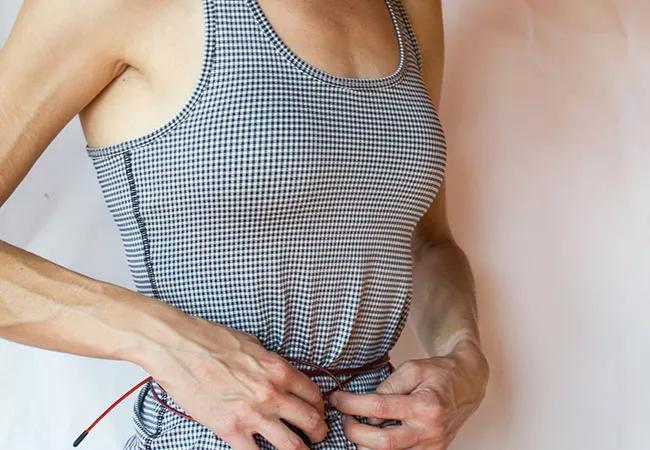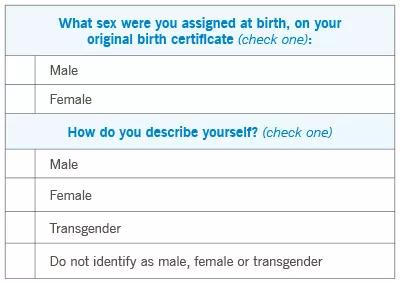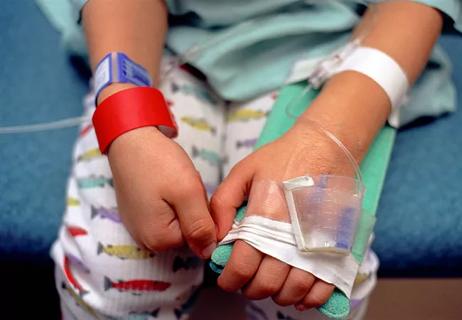Don’t use HEADDSSS questions only once

By Ellen S. Rome, MD, MPH
Cleveland Clinic is a non-profit academic medical center. Advertising on our site helps support our mission. We do not endorse non-Cleveland Clinic products or services. Policy
When taking a history, many pediatricians have become adept at asking the HEADDSSS questions about Home, Education, Activities, Drugs (and cigarettes and alcohol), Depression, Suicide, Safety and, of course, Sex. Primary care clinicians have increased their skills in asking, “Are you attracted to guys, girls or both? Have you had sex with guys, girls or both? Oral, vaginal, anal? Has anyone ever done anything to you sexually that made you uncomfortable?”
These questions used to make some clinicians squeamish, but they are now taught as mainstream, bread-and-butter teenage health to all medical students and residents — and have been embraced as normative questions for this age group. What we also need to remember is that not all youths experience gender identity, or an individual’s internal sense and subjective experience of gender, which may or may not be the same as the sex assigned at birth.
Some youths have gender dysphoria, in which they feel uncomfortable with their assigned gender identity; they may feel they have the wrong body parts. Add to this discomfort insufficient coping strategies and/or supports, and some youths find their way to maladaptive coping strategies, ranging from looking for love in all the wrong places with sexual risk-taking, self-medication with alcohol or drugs, or disordered eating.
Several cases in the literature document male-to-female (MtF) patients with disordered eating and gender dysphoria, with each noting a drive to be more feminine as a motivator for their symptoms.1-5 In our recent case report,6 we described a 16-year-old patient with a female sex assigned at birth who presented with symptoms consistent with anorexia nervosa. Over the course of treatment, this female-to-male (FtM) young person wanted to eradicate any feminine curves, stating, “I dislike my curves, my breasts, my hips, my face. I wish I had more defined muscles in my arms and a more angular face.” Over the next 10 months, with individual therapy and parental support, he began hormone therapy with testosterone cypionate at 50 mg/week. At age 19, five months after starting testosterone, he underwent bilateral mastectomy.
Once medical treatment for his gender dysphoria began, his anxiety and disordered eating decreased substantially as he began to identify himself as a transgender male. In college, he began to advocate for transgender inclusivity, expanded his peer group and initiated a romance with a female. After doing well for a number of months with a BMI of 19 kg/m2, he relapsed with weight loss resulting in a BMI of 17.9 kg/m2 during a self-identified time of school stress and exercise restrictions during his postoperative course.
This case was the first to describe FtM gender dysphoria resulting in anorexia nervosa, with description of a course inclusive of hormonal therapy and treatment. This young person initially presented as a “typical anorexic” patient — as a Caucasian young lady in mid-adolescence. His therapy addressed his gender dysphoria only at his own request during treatment for his eating disorder, in which he felt safe enough to disclose this sensitive issue.
To get at this information earlier, the astute clinician, periodically during follow-up visits, should ask the HEADDSSS questions again; they do not have to be one-stop shopping at the initial visit, then forgotten. After establishing confidentiality, the discussion can be framed with an opening statement such as, “My agenda is to have you lead a healthy and happy life, and that includes developing a healthy sexuality over your lifetime. Do you see yourself as a male, female, transgender or other? Are you attracted to guys, girls, both or none of the above?” These questions can be added to the ones in the original HEADDSSS lineup. Another option is to add survey questions that a teen can answer confidentially. This two-step approach helps clarify assigned gender (the gender ascribed to the individual at birth) as well as gender identity. Survey questions can include the following:

Eating disorder treatment involves acute and chronic medical stabilization, nutritional improvement, and psychological skillsbuilding to improve coping strategies and resiliency. Use of a hierarchical approach can help prioritize care, addressing the lifethreatening issues of suicidality plus acute medical stabilization first, and moving on to refeeding plus psychological growth. When considering hormonal treatment in the gender dysphoric individual with or without an eating disorder, the Standards of Care of the World Professional Association for Transgender Health suggest that hormonal suppression should occur only when the adolescent has reached Tanner 2, or early puberty.7 These early pubertal changes can be the harbinger of disordered eating in both transgender and cisgender youth (cisgender means their assigned biologic gender matches their internal view of gender identity).
Our ongoing research explores the long-term outcomes of youths and young adults with eating disorders with and without gender dysphoria. Males in our cohort lost more weight prior to presentation than females; they also required more hospital days to resolve acute medical instability. Adolescent and young adult males with eating disorders admitted for acute medical stabilization tended to report a heterosexual gender identity more frequently than LGBTQ; their prevalence of LGBTQ appeared similar to that of other adolescent population profiles. Readmission rates and remission were similar between males and females.
Gender dysphoria is not universally linked with eating disorders, yet it can provoke an eating disorder as a maladaptive coping strategy in a vulnerable patient. Pediatricians can serve as a frontline screen for body discomfort, gender dysphoria, and disordered eating attitudes and behaviors.
References

Cleveland Clinic physicians offer their insights

Increasing support for breastfeeding patients

Program has facilitated nearly 300 consults across 25 departments in less than a year

Though completely preventable, lead poisoning remains a public health threat

Differences in infection rates, management, outcomes and transmission

Helps patients visualize proper tongue placement

On the need for coordinated care